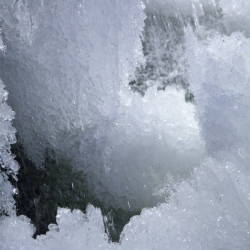
A volcano may be stirring more than a half-mile beneath a major ice sheet in Antarctica, raising the possibility of faster base melting that could ultimately affect climate.
Seismologists working in a mountainous area of Marie Byrd Land in western Antarctica detected a swarm of low-magnitude earthquakes in 2010 and 2011 similar to those that can precede volcanic eruptions, according to a study published online Sunday in Nature Geoscience.
The area of activity lies close to the youngest in a chain of volcanoes that formed over several million years, and the characteristics and depth of the seismic events are consistent with those found in volcanic areas of Alaska’s Aleutian Islands, the Pacific Northest, Hawaii and Mt. Pinatubo in the Philippines, the study concludes.
The tight focus of the 1,370 tremors and their deep, long-period waves helped researchers rule out ice quakes, glacial motion or tectonic activity as causes. So, too, did their apparent depth: At 15-25 miles beneath the sub-glacial surface, they are close to the local boundary between Earth’s crust and mantle.
“At first I had no idea it was something volcanic, and then, as I started putting together all the pieces, it started looking more and more like I’d found a volcano,” said study coauthor Amanda Lough, a seismology graduate student at Washington University in St. Louis.
Chances of a massive fire-and-ice catastrophe are slim, however. Clusters with these wave characteristics have sometimes preceded eruptions, but not always, Lough said. And it would take a staggering release of energy to punch through more a half-mile of ice, she noted.
“Does this mean that something is going to be happening in the next 20 years or so? I have no idea,” she said. “It’s not something that’s going to cause major issues. You’d have to have a huge, huge eruption.”
